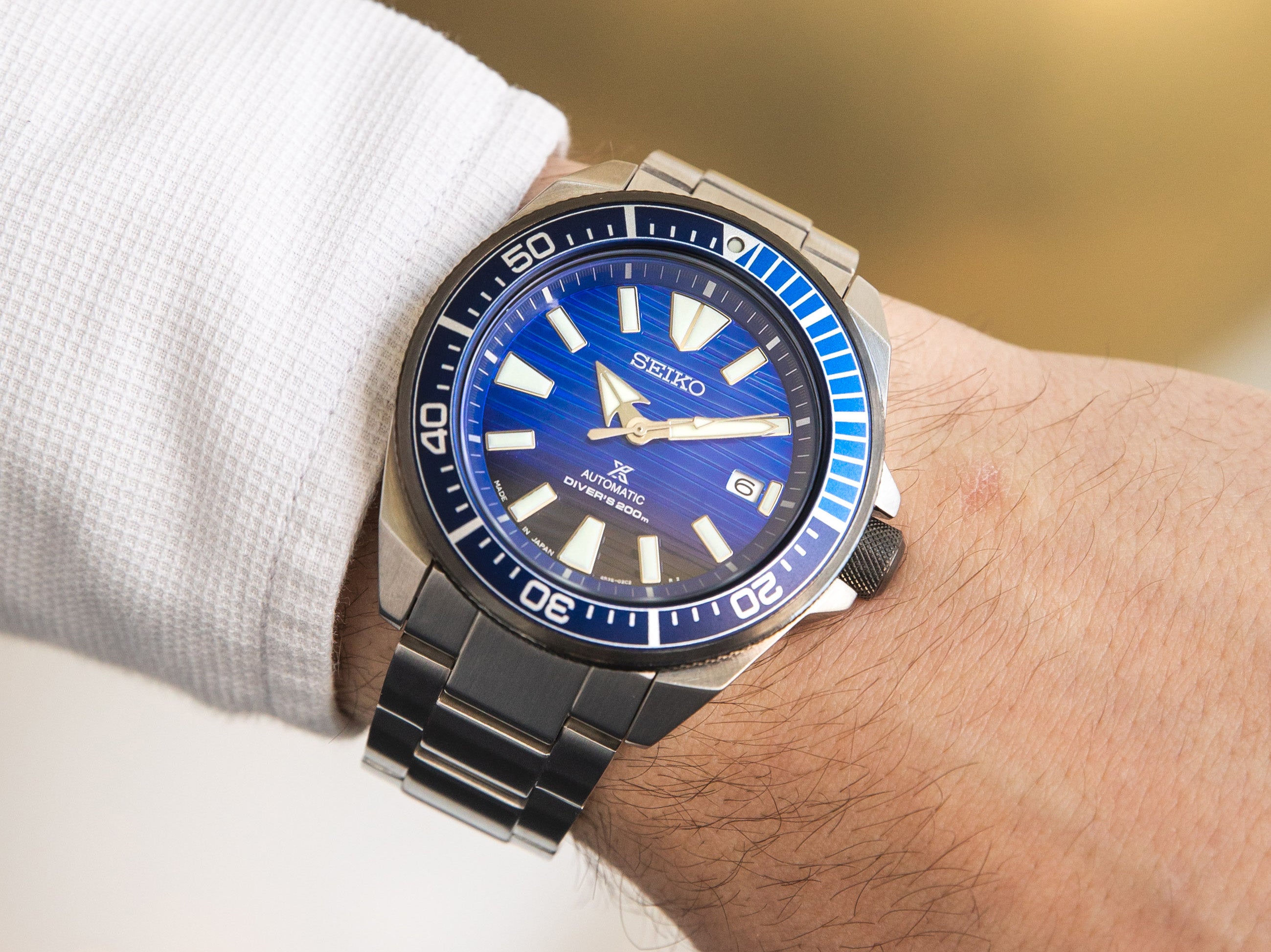What is water resistance in a watch? Great question! To preserve the quality of your watch, it is important to follow our water-resistant watch guide.
As a rule of thumb, if "WATER-RESISTANT" is not engraved on the back of the watch case, then your watch is not water resistant, and care should be taken not to get it wet as water may damage the mechanics of your watch.
On this page:
- What Is BAR?
- What Is ATM?
- What Is WR?
- 3 BAR / 3 ATM / 30m / 100ft
- 5 BAR / 5 ATM / 50m / 165ft
- 10 BAR / 10 ATM / 100m / 330ft
- 20 BAR / 20 ATM / 200m / 660ft
- 50 BAR / 50 ATM / 500m / 1650ft
- 100 BAR / 100 ATM / 1000m / 3280ft / Divers or ISO 6425
Please refer to the following chart to identify what actions can be taken with your watch:

What Is BAR?
A BAR is a measure of pressure. It means that your watch will operate safely under the respective BAR rating. For example, 10 bar equals 100 metres of water resistance. However, that does not mean you can go scuba diving. Please refer to the above chart for more information.
What Is ATM?
The ATM, or atmosphere rating, is used to indicate how much static atmospheric pressure a watch can endure when submerged. The higher the ATM rating, the more a watch can withhold water pressure.
One ATM translates to the static pressure exerted by static submersion in 10 metres of water. However, this does not mean that the watch can be taken 10 metres below sea level. Please refer to our chart for a comprehensive assessment of what activities can be undertaken.
What Is WR?
WR refers to water resistance. It is commonly marked on the back of wrist watches to indicate how well a watch is sealed against the ingress of water. Please note all watches, even those with 100m+ water resistance, should be kept away from humid conditions. This means steamy spa baths and hot showers. Despite being watertight, watches are not necessarily resistant against humidity and hot air.

3 BAR / 3 ATM / 30m / 100ft:
If your water-resistant watch says it is 30 metres, 3 atmospheres, 3 bars or 100ft water-resistant, this simply means it is resistant to small amounts of water like rain and splashing from hand washes. Anything more than that is a huge red flag.
5 BAR / 5 ATM / 50m / 165ft:
A watch that is 50 metres water-resistant is an improvement in comparison to a watch that is 3 bars, however, you still can't go deep diving. A watch that has 50 metres, 5 atmospheres, 5 bars and 165ft water resistance means it can withstand the level of water exposed to in a shower. Wearing this water-resistant watch in a pool of water may be okay, provided the water does not get inside, which means avoid underwater swims for long durations or probably all together just to be safe.
10 BAR / 10 ATM / 100m / 330ft:
A waterproof watch with 100 metres, 10 atmospheres, 10 bars and 330ft of water resistance won't work after high board diving or aqua diving. However, they are suitable for swimming and water sports like snorkelling.
20 BAR / 20 ATM / 200m / 660ft:
A 200 metres, 20 atmospheres, 20 bars and 600ft watch can handle pretty much any form of swimming or diving you throw at it. However, they still not safe for deep-sea diving, but it is safe for standard scuba diving for short periods of time. This type of water-resistant watch can also be worn by water sports professionals who are in and out of the water frequently.
50 BAR / 50 ATM / 500m / 1650ft:
A 500 metre, 50 atmospheres, 50 bars and 1650 ft watch is suitable for all high-impact water sports, scuba-diving and saturation diving.
100 BAR / 100 ATM / 1000m / 3280ft / Divers or ISO 6425:
This ISO standard means the watch is guaranteed by the manufacturer to handle depths of at least 100 metres. If your watch claims to be ISO 6425 or has Divers written on it, the watch is a certified diving watch. It is completely safe to be worn underwater and is a literal water-resistant watch. Watches that measure up to this standard are also shock, magnet and salt water tolerant and can also be used in places of total darkness.
For more information, please refer to our Understanding Your Water Resistant Watch blog.







